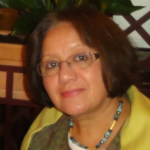Link to Pubmed [PMID] – 16380326
Arch. Med. Res. 2006 Feb;37(2):253-8
During amebiasis, E. histolytica motility is a key factor to achieve its progression across tissues. The pathogenicity of E. histolytica includes its capacity to phagocyte human cells. Motility requires polarization of E. histolytica that involves protrusion of a pseudopod containing actin and associated proteins [myosin IB, ABP-120 and a p21-activated kinase (PAK)] and whole-cell propulsion after contraction of the rear of the cell, where myosin II and F-actin are concentrated. An interesting characteristic of this parasite is the presence of two unique myosins (myosin II and unconventional myosin IB), in contrast to several actin genes. Little is known about the regulation of the actin-myosin cytoskeleton dynamics of E. histolytica, and a better understanding of signaling pathways that stimulate and coordinate regulators protein and cytoskeleton elements will provide new insight into the cell biology of the parasite and in amebiasis. Here we summarize the pleiotropic functions described for myosin II and PAK in E. histolytica. We propose that survival and pathogenicity of E. histolytica require an active actin-myosin cytoskeleton to cap surface receptors, to adhere to host components, to migrate through tissues, to phagocyte human cells and to form liver abscesses.

